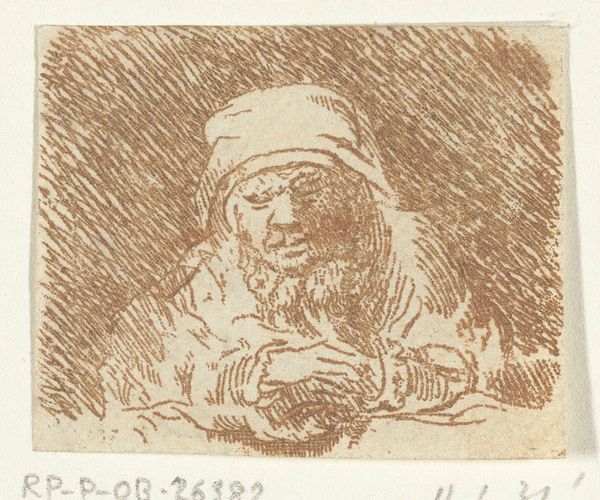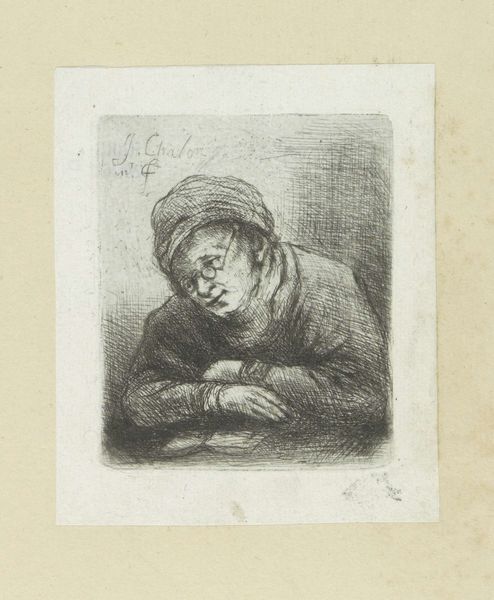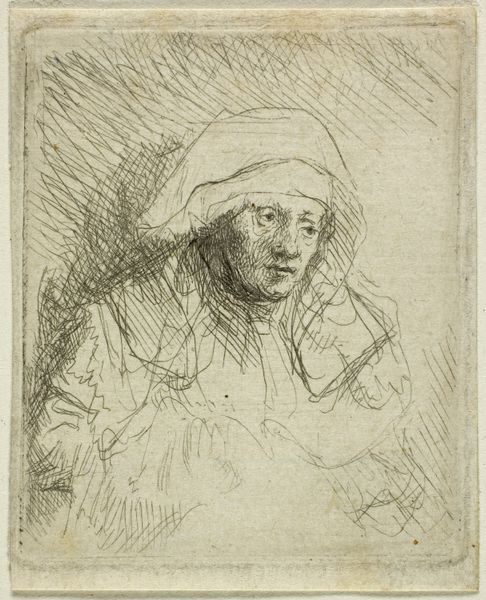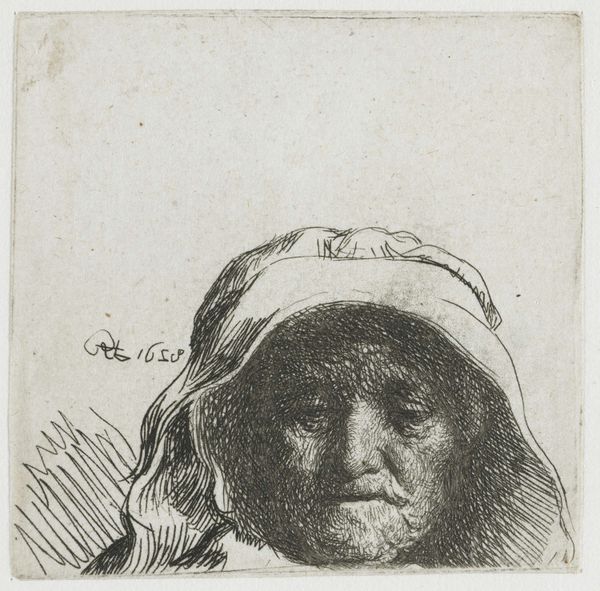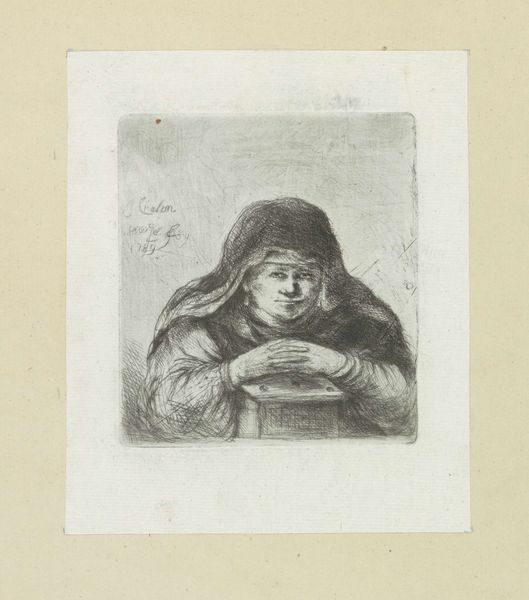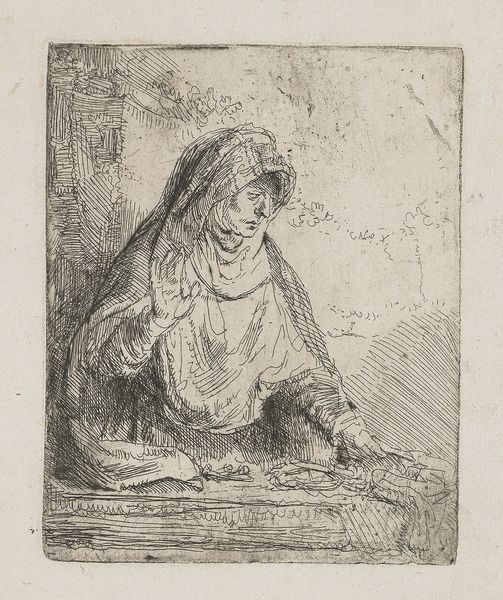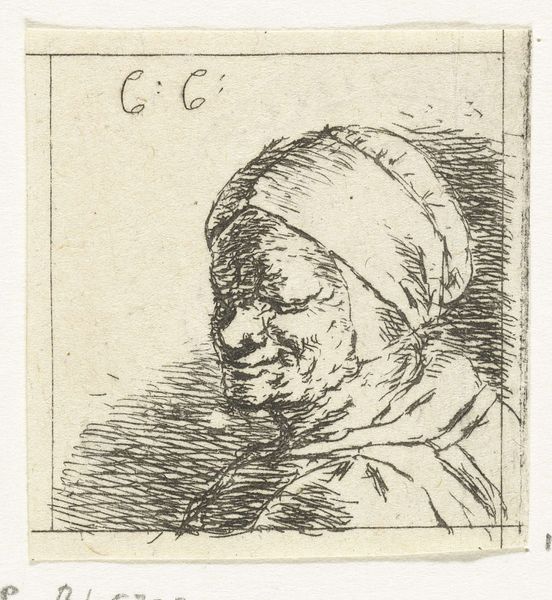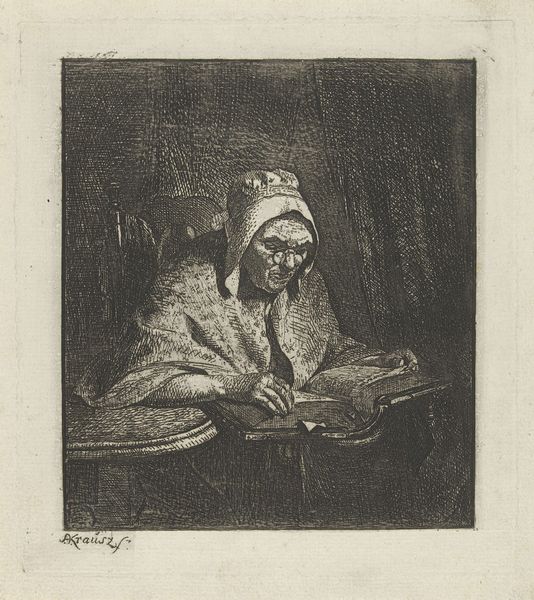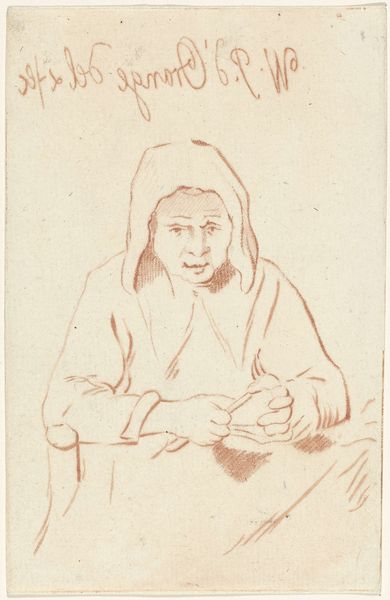
drawing, print, etching, ink, pencil
#
portrait
#
drawing
#
pen drawing
#
mechanical pen drawing
# print
#
pen illustration
#
pen sketch
#
etching
#
old engraving style
#
personal sketchbook
#
ink
#
ink drawing experimentation
#
romanticism
#
pen-ink sketch
#
pencil
#
pen work
#
sketchbook drawing
#
realism
Dimensions: height 43 mm, width 52 mm
Copyright: Rijks Museum: Open Domain
Curator: This is "Slapende oude man" by Ernst Willem Jan Bagelaar, made sometime between 1798 and 1837. It’s a drawing, or perhaps a print – etching, ink, and pencil were all used. It looks quite intimate, almost like a quick sketch from life. What strikes you most about it? Editor: I’m fascinated by how raw and unpolished it feels. It’s a very simple scene, an old man sleeping, but the lines are so expressive. Considering the various materials, can we learn anything about the production of this image and how that might influence its interpretation? Curator: Absolutely. Consider the combination of etching and ink. Etching, as a printmaking technique, suggests a potential for reproducibility, yet the addition of ink and pencil points towards a handmade intervention, making each impression unique. This tension between mass production and individual artistry is central. What social and economic conditions do you think might be influencing this? Editor: Perhaps Bagelaar was trying to reach a wider audience through prints, but still wanted to maintain a sense of artistic authenticity by adding unique touches with ink and pencil? Was this a commentary on the changing art market and the role of the artist in a time of increasing industrialization? Curator: Precisely. The materials reveal a negotiation between craft and industry. Think about the labor involved: the skilled work of etching the plate, the repetitive printing process, and then the final act of individual embellishment. It challenges our understanding of the artwork as a purely aesthetic object, pointing instead to its status as a product of specific social and material conditions. It forces us to consider: Who was this artwork made *for*? Editor: So, analyzing the materials used and how the piece was produced gives us insight not just into the artist’s process, but also into the wider cultural and economic context. I’ll definitely think about the production more, beyond just the surface. Curator: Indeed. It reminds us that art is not born in a vacuum.
Comments
No comments
Be the first to comment and join the conversation on the ultimate creative platform.

